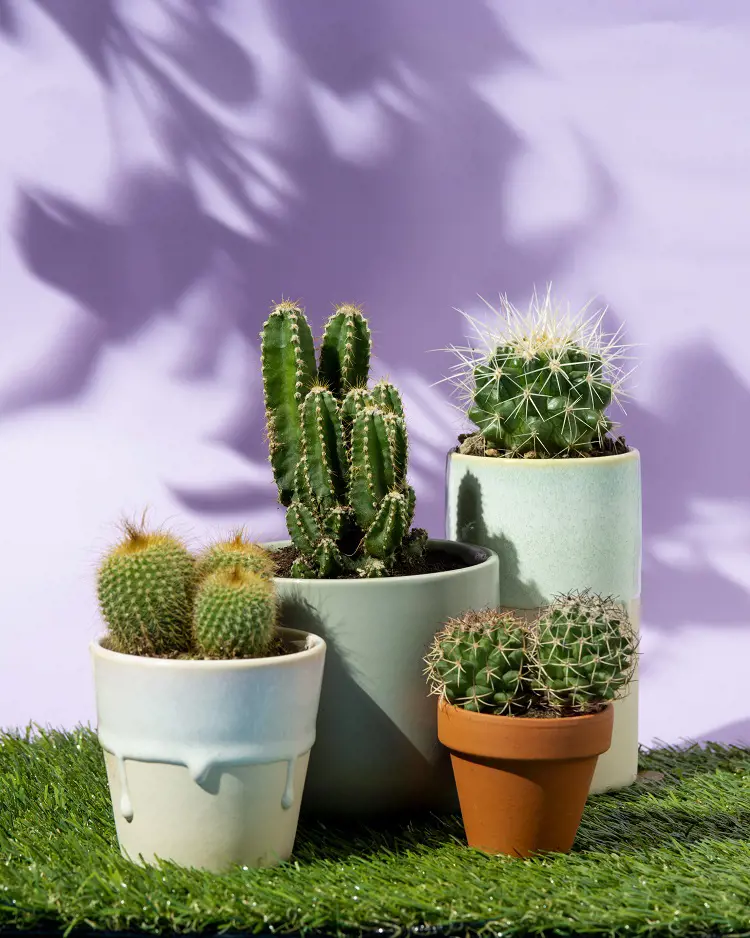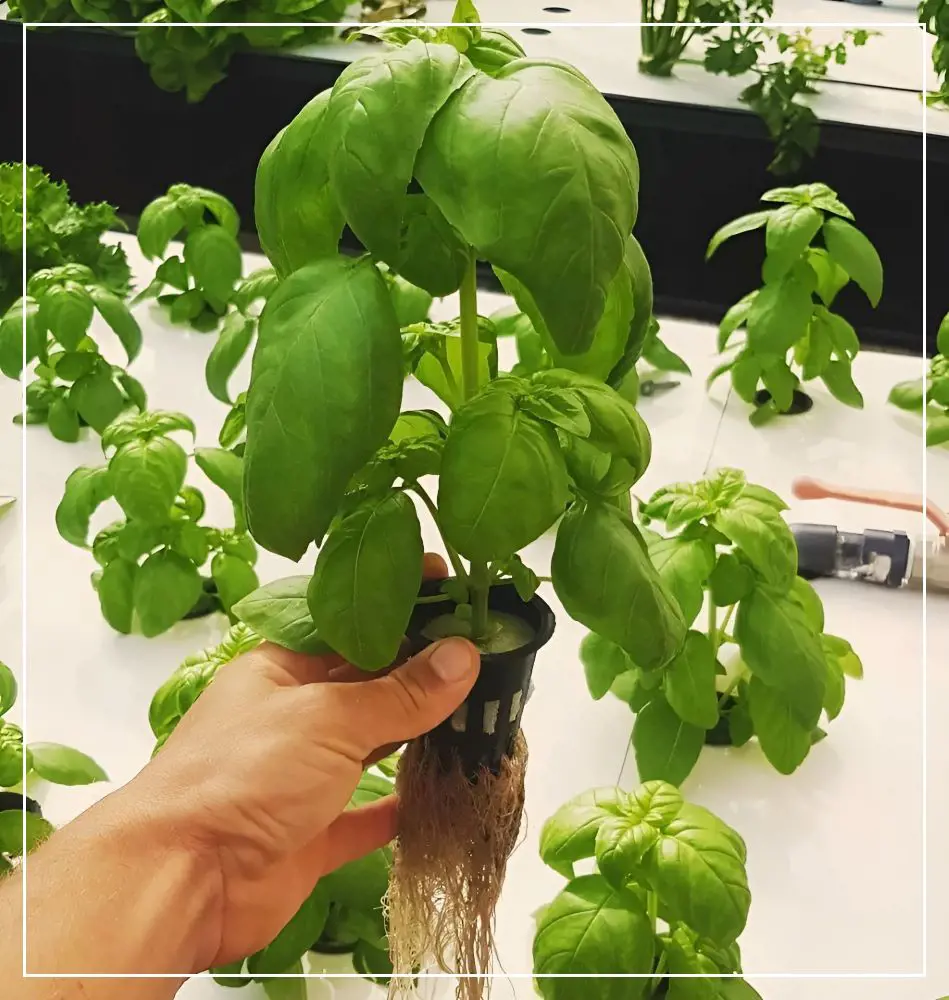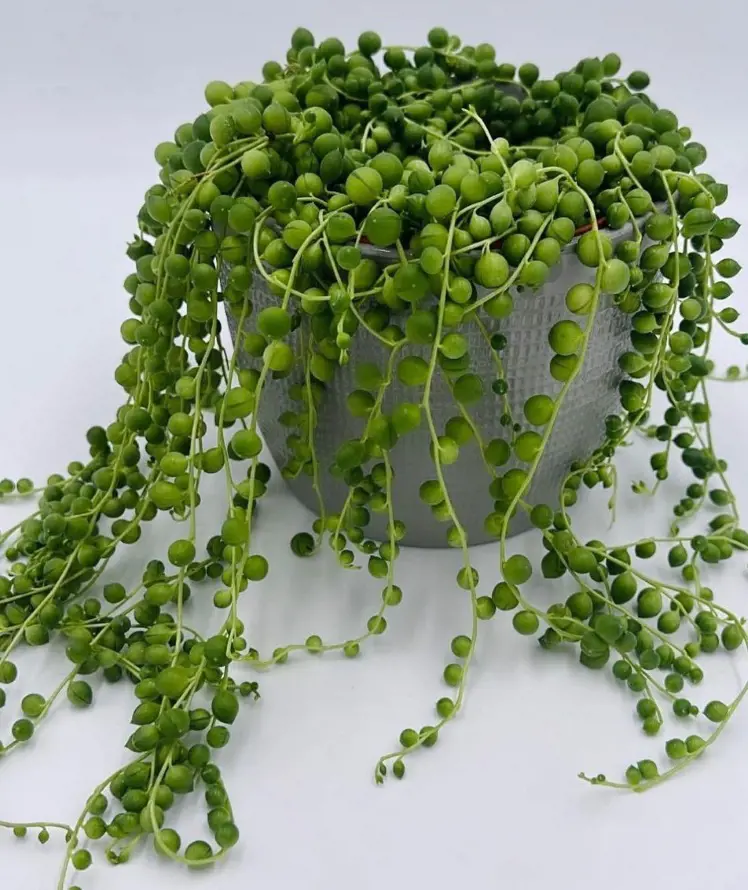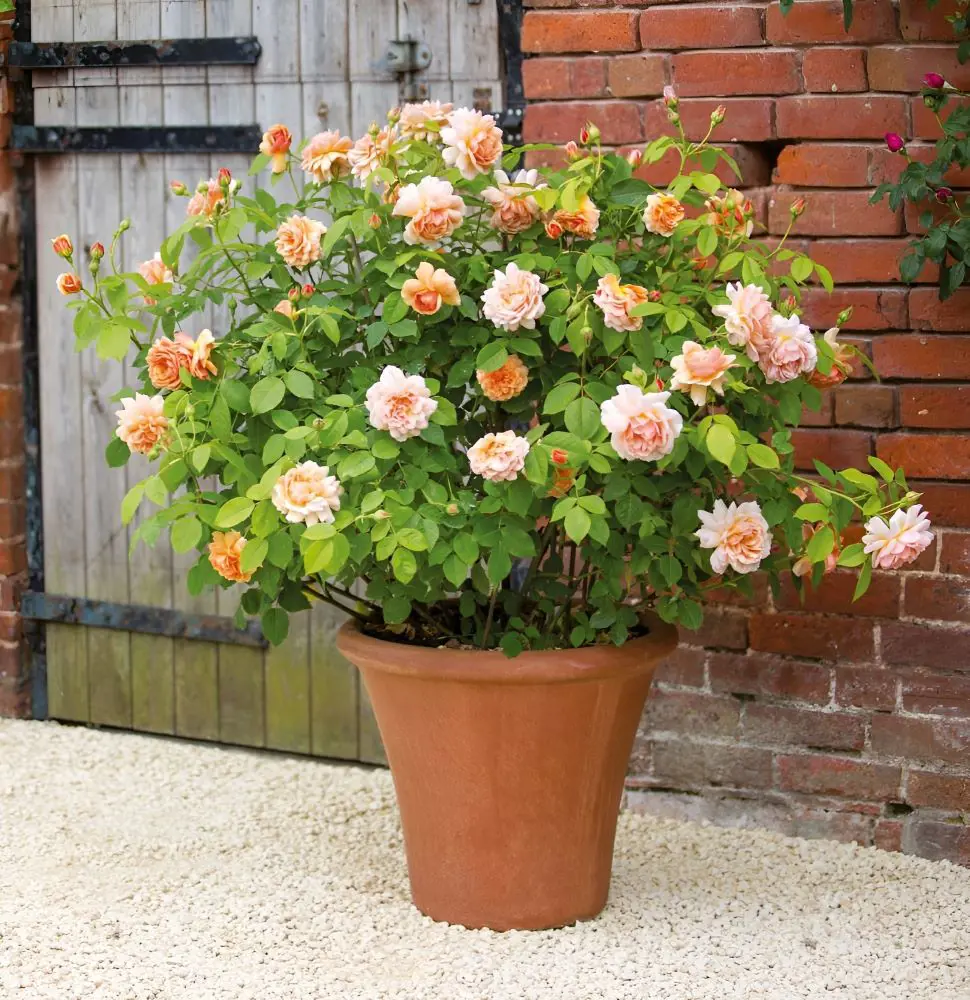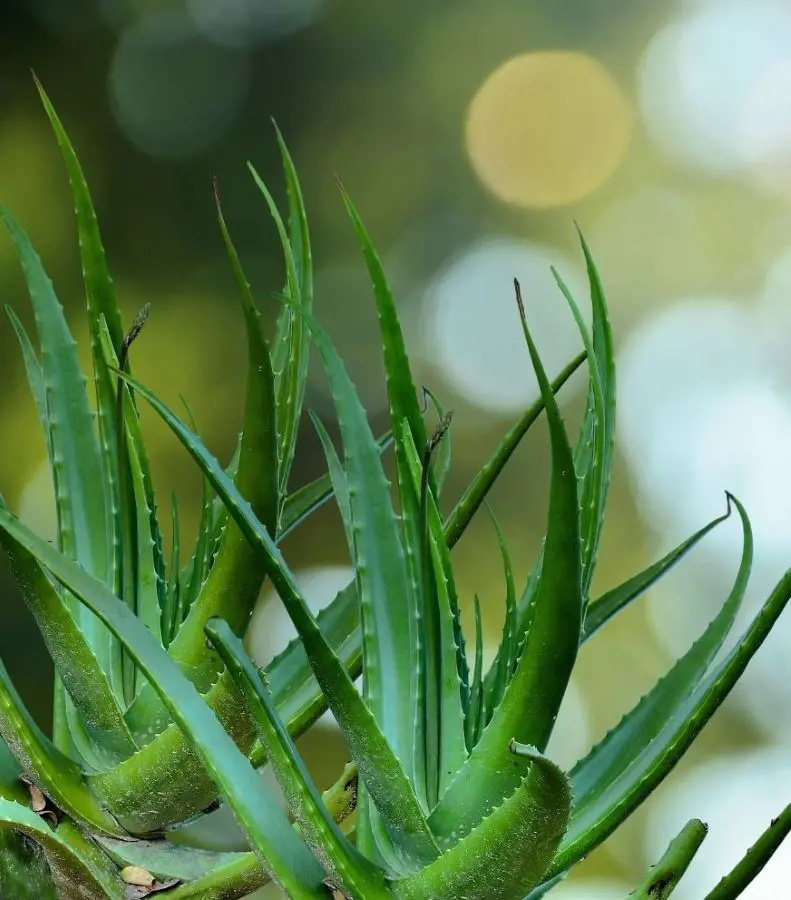How To Propagate Spider Plant
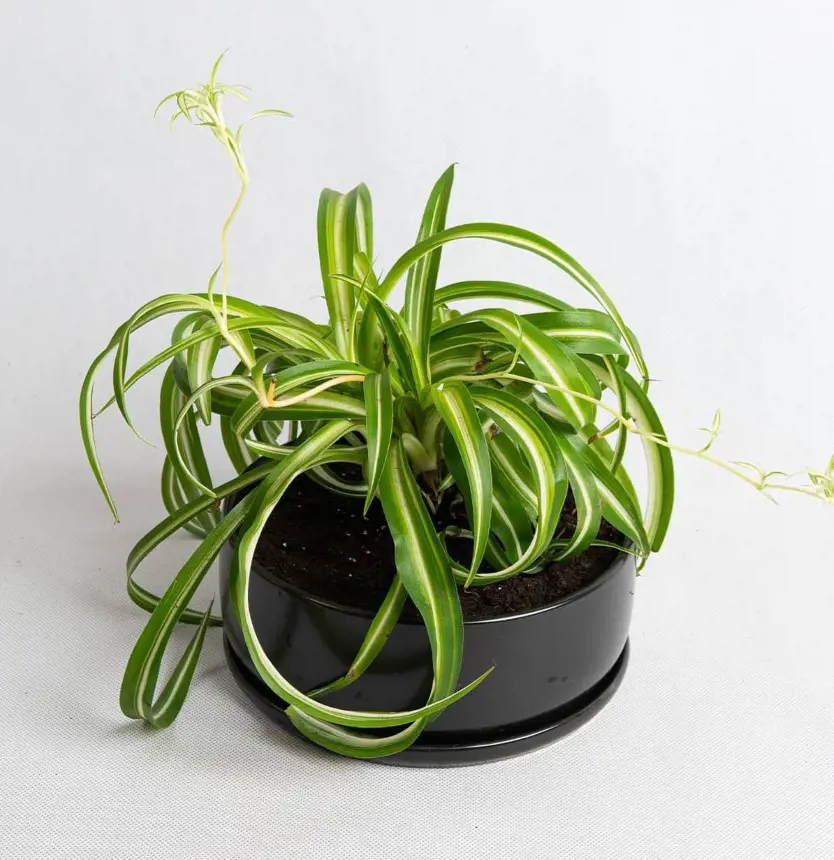
This post may contain affiliate links. If you make a purchase through links on our site, we may earn a commission.
The Spider Plant is a resilient indoor plant appreciated for its arching leaves and spider-like offshoots. It's an ideal choice for plant enthusiasts due to its easy care.
Propagating these plants is also simple and can be done in various ways, such as using offsets, runners, and baby spiderettes.
1. Propagation Through Spiderettes
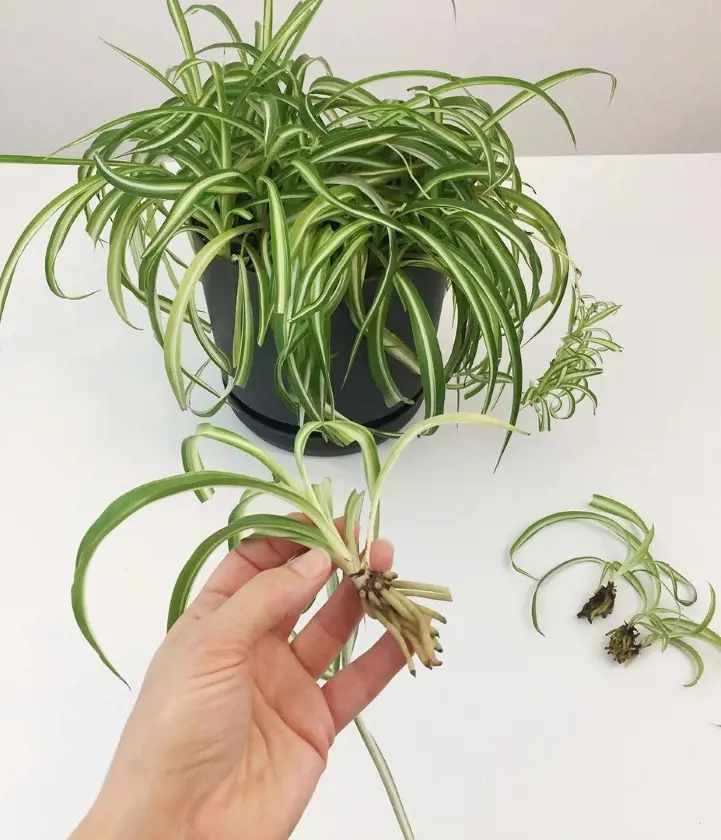
Spiderettes are small offshoots or baby spider plants that develop at the end of long stems and these can be used for propagation. These small plantlets have roots and can be carefully detached from the mother plant.
Once these baby plants are separated, they can be rooted in water and then potted in the soil to grow into independent spider plants. Steps in this method involve:
- Gently detach plantlets with roots from mother plant.
- Dip roots in water, then pot in well-draining soil.
- Water lightly and keep warm with bright, indirect light.
2. Water Propagation
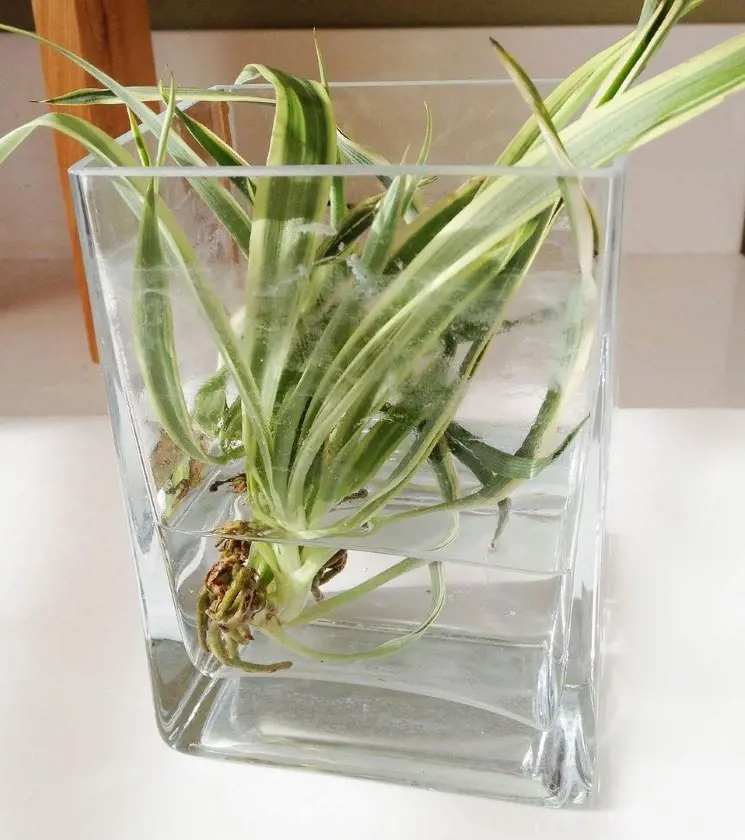
Water propagation for spider plants is a method of vegetative propagation. In this process, an offset or healthy leaf of the plant is placed in water for a period until it develops more robust roots.
Once the roots have grown sufficiently, the plantlet can then be transferred to the soil for continued growth. This method allows the plant to initiate root development in water before being introduced to a soil environment. The steps for this method are:
- Fill a glass with water, place leaf section with node submerged.
- Wait for roots to grow (few weeks), then plant in soil.
3. Layering
In layering propagation, a long vine becomes a source for new plants. It involves gently bending the vine to the soil, securing a section, and patiently waiting for roots to develop at the pinned point. This method allows for the creation of healthy, rooted plants before separating them from the parent.
This process mimics natural rooting, ensuring robust plants. It's an accessible propagation technique, suitable for beginners. Spider plants are particularly responsive to layering, making it an effective method for home gardeners. The steps for propagation are:
- Bend a long vine to the soil, and pin down a section with soil.
- Roots will sprout at a node and cut vine when established.
4. Seed Propagation
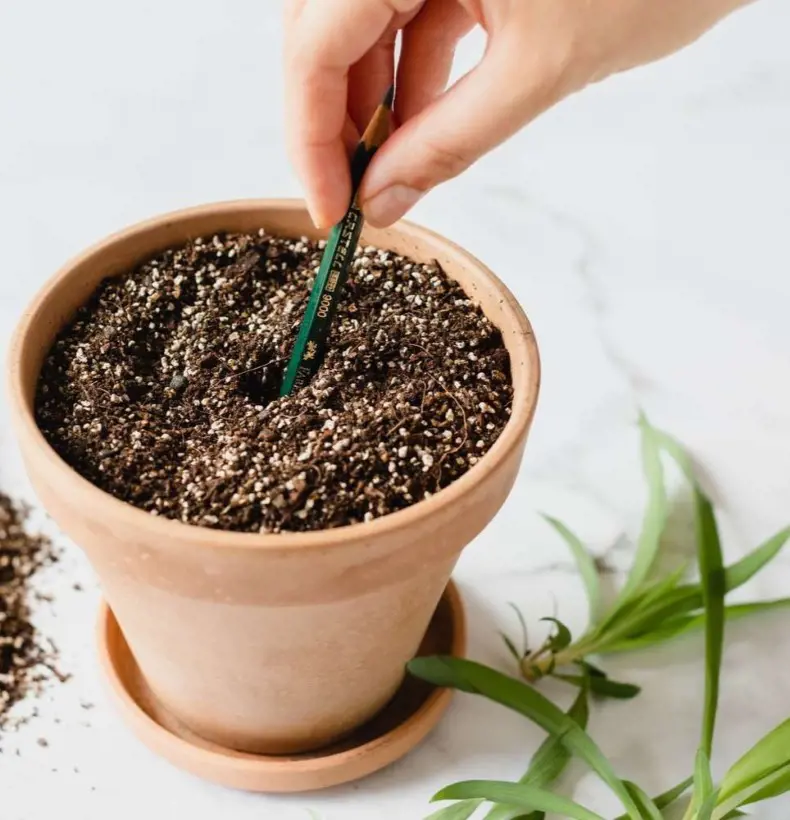
Seed propagation of spider plants is a straightforward method where you gather mature seeds from the plant's flowers. Plant these seeds in soil, ensuring they stay moist, and wait for them to sprout and grow into new plants.
This method introduces diversity, as each seed may develop unique traits. It's an easy and exciting way to propagate spider plants, adding variety to your collection through the natural process of seed germination. Steps in this method involve:
- Sow seeds on moist soil, keep warm and humid.
- Germination might take longer, so be patient.
5. Soil Division
Soil division, a propagation method for spider plants, involves separating the plant's offshoots or pups from the main plant. Gently remove the young plants with some roots attached, ensuring they have their soil. Transplant these divisions into separate pots, and water them well.
This method is an easy way to create new spider plants, allowing each division to grow independently and thrive as individual, mature plants. Steps for this propagation are:
- Remove the mother plant, and gently divide the root clump.
- Repot each section in well-draining soil, and water lightly.
6. Hanging Basket Babies
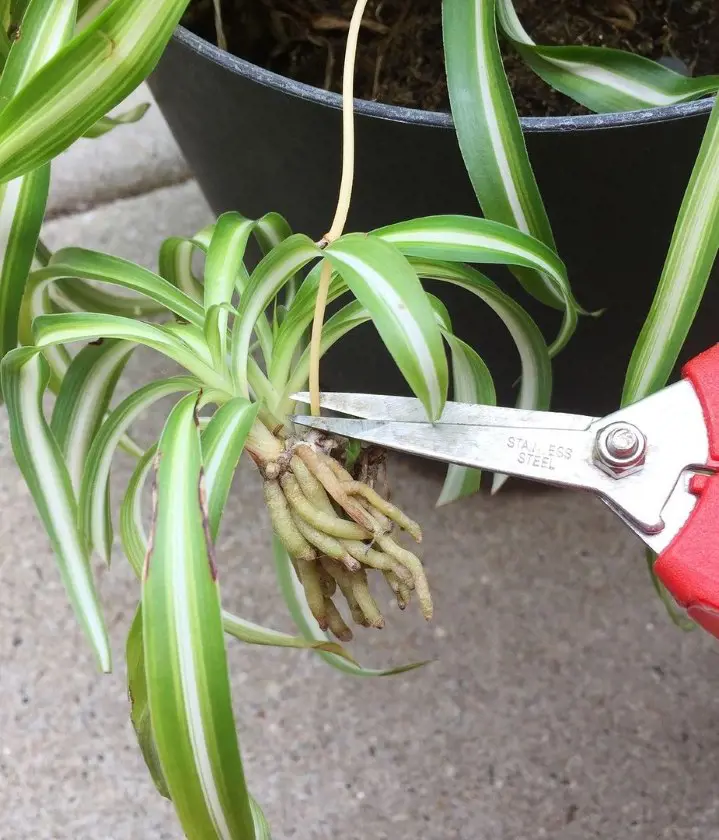
Hanging basket babies refer to a method known as air layering. In air layering, a portion of the plant's stem is exposed and encouraged to form roots while still attached to the parent plant. This is achieved by making a small cut or incision in the stem, often below a node, and then wrapping it with moist soil or a rooting medium.
Once roots have developed, the separated portion can be cut and planted independently. This process involves encouraging root development on a specific section of the stem, maintaining its connection to the main plant. The step for propagation are:
- Let spiderettes grow roots in the air, pot them individually.
7. Leaf Cuttings In Soil
In leaf-cutting soil propagation, you take a healthy spider plant leaf, cut it into sections, and plant them in soil. Keep the soil damp, allowing roots to develop. Once the roots are established, new spider plants will grow.
This method is a simple way to create more plants from a single leaf, facilitating the transition to becoming independent, healthy spider plants. The steps for propagation are:
- Cut single leaves with node, bury stem end in soil.
- Water lightly and keep warm with indirect light.
8. Leaf Cuttings In Water Bottle
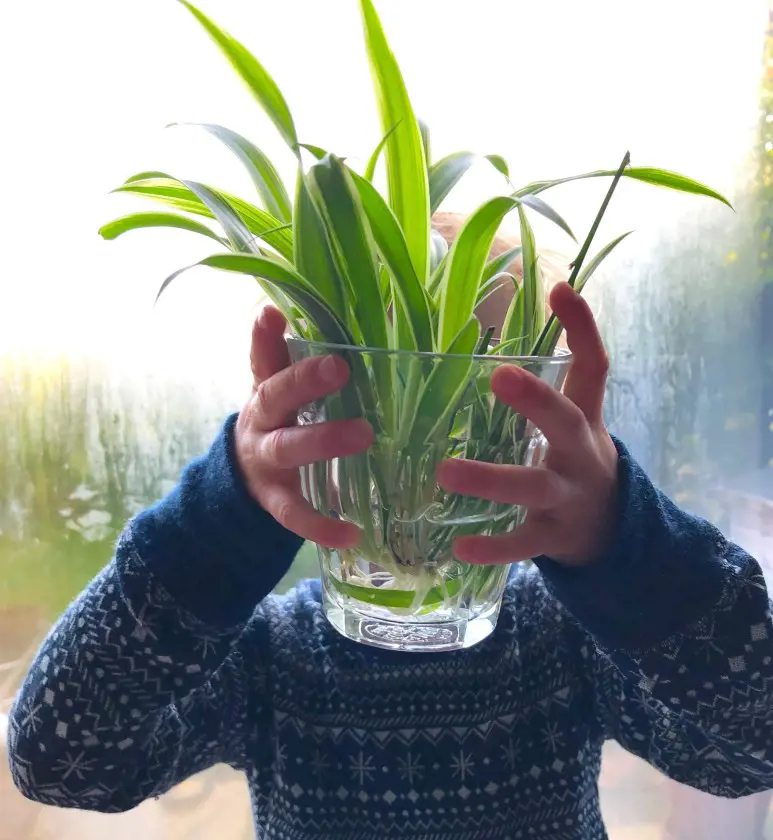
You even can propagate spider plants through leaf cuttings in a water bottle. This method involves taking a healthy leaf, cutting it into sections, and placing these sections in a water-filled bottle. The cut ends are placed in the water, and the water is changed consistently.
As roots develop in the water, the cuttings can then be transferred to soil for continued growth. This method offers a simple and convenient way to encourage root development before planting, allowing for the successful creation of new spider plants. Steps are as given below:
- Cut leaf section with node, place in water bottle (node submerged).
- Change water regularly, plant when roots form.
9. Pinwheel Method
In the pinwheel method of spider plant propagation, a healthy spider plant leaf is utilized by cutting it in half lengthwise and making V-shaped cuts at intervals. Then, lay the cut leaf flat on the soil, burying the cut ends, and water lightly.
Over time, each V-shaped cut grows into a new plant, forming a pinwheel-like arrangement. It's like planting spider plant pieces in a circular pattern, allowing them to grow into a cluster of vibrant new spider plants with minimal effort. The steps for propagation are:
- Cut the leaf in half lengthwise, and make V-shaped cuts at intervals.
- Pin the leaf flat on the soil, burying cut ends, and water lightly.
10. Leaf In Plastic Bag
Leaf in a plastic bag is a spider plant propagation method where you take a healthy leaf, place it in a plastic bag with a bit of damp soil, and seal the bag. Leave it in a bright but indirect light spot. As the leaf develops roots, plant it in the soil.
In this method, all you need are a plastic bag, damp soil, and a healthy spider plant leaf. This simple method helps the leaf grow roots in a closed environment before being transferred to soil for further growth. Steps for this propagation involve:
- Place the leaf section with a node in a damp paper towel, and seal it in the bag.
- Roots will form inside, then plant in the soil.
11. Moss Propagation
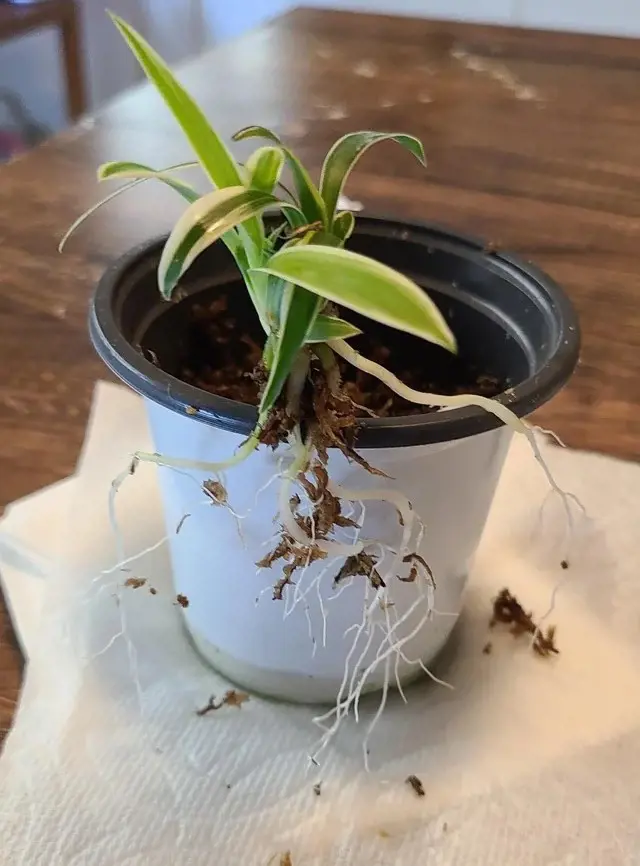
In moss propagation for spider plants, sphagnum moss is utilized to promote root growth. Dampen the moss, wrap it around a spider plant offshoot, and seal it in plastic for a humid environment. As roots develop into the moss, cut the offshoot and plant it in soil.
This method creates a favorable environment for roots to form, aiding the spider plant's growth. It's akin to offering a nurturing space for the baby plant's roots before transplanting it into its permanent soil home. Steps for this method involve:
- Lay leaf section on moist moss, pin down ends with hairpins.
- Cover with plastic, mist regularly, roots will germinate.
12. Leaf Division
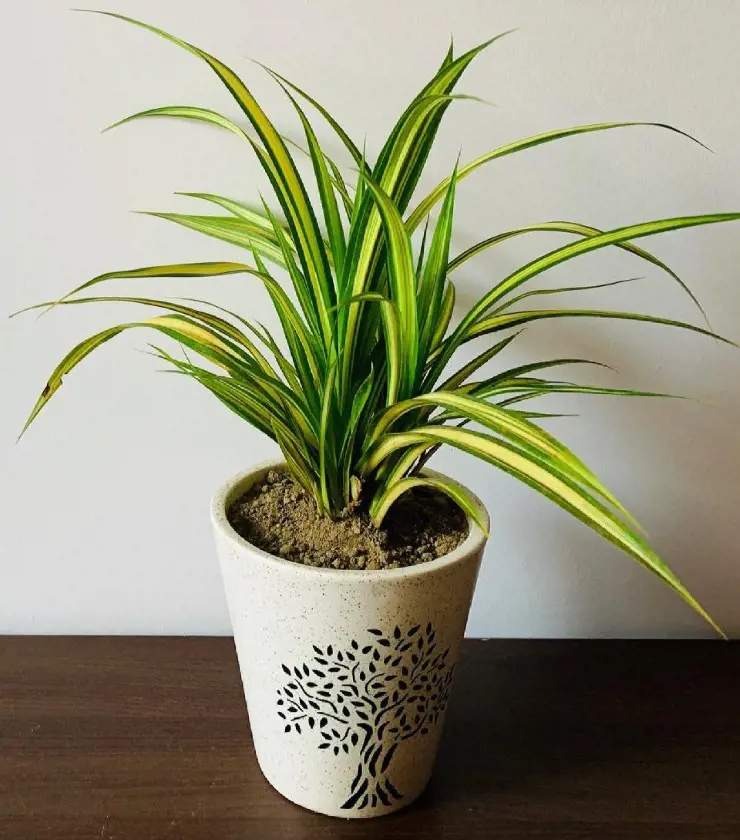
Propagation through leaf division is not a common or recommended method for spider plants. However, sometimes we can use this method as an alternative. While not as reliable as propagating through offsets, some gardeners have reported success in cultivating new plants by carefully dividing and planting individual leaves.
It's essential to note that results may vary, and using offsets remains the more established and reliable technique for this plant propagation. Steps in this method involve:
- Cut a healthy leaf into 2-3 inch sections.
- Dip cut ends in rooting hormone (optional).
- Lay sections flat on moist soil, bury ends slightly.
- Keep soil moist.
Recent posts
How To Propagate
How To Propagate
How To Propagate Cactus In 9 Ways
Propagation involves creating new plants from existing ones. In nature, this often happens through seed formation after flowers are pollinated. However, due to the shrinking natural habitats of cactus, it’s essential to propagate and care for t...
How To Propagate
Basil Propagation Methods: Flowers, Seeds or Cuttings
In the realm of culinary delights and garden magic, basil stands as a beloved herb, prized for its aromatic leaves and versatility in the kitchen. Yet, unlocking the secrets of basil propagation opens up a whole new realm of possibilities. From the d...
How To Propagate
How To Propagate Monstera Deliciosa
Monstera plants are popular indoor plants, making homes and offices cheerful and stylish. They're not just easy to grow but also thrive in any indoor setting. But if you're wondering how to make more Monstera plants, it might seem tricky. Start...
How To Propagate
How To Propagate String Of Pearls
Propagating String of Pearls is a fascinating and fulfilling process that allows you to create new plants from an existing one. This plant is a cute succulent from South Africa, known scientifically as Senecio Rowleyanus. It has long, hanging stems w...
How To Propagate
How To Propagate Roses In 12 Steps
Propagating roses might sound fancy, but it's a way to grow new rose plants from existing ones. It's like making baby roses. If you have a beautiful rose bush and want more just like it, you can do this through a process called propagation. Here's a ...
How To Propagate
How To Propagate Aloe Vera
If you are in a quest to enlarge the supply of aloe vera plants or share their beauty with your loved ones, then learning how to propagate aloe vera is the right way. It doesn't matter if you are a beginner or an expert, as these ten tips will help y...
